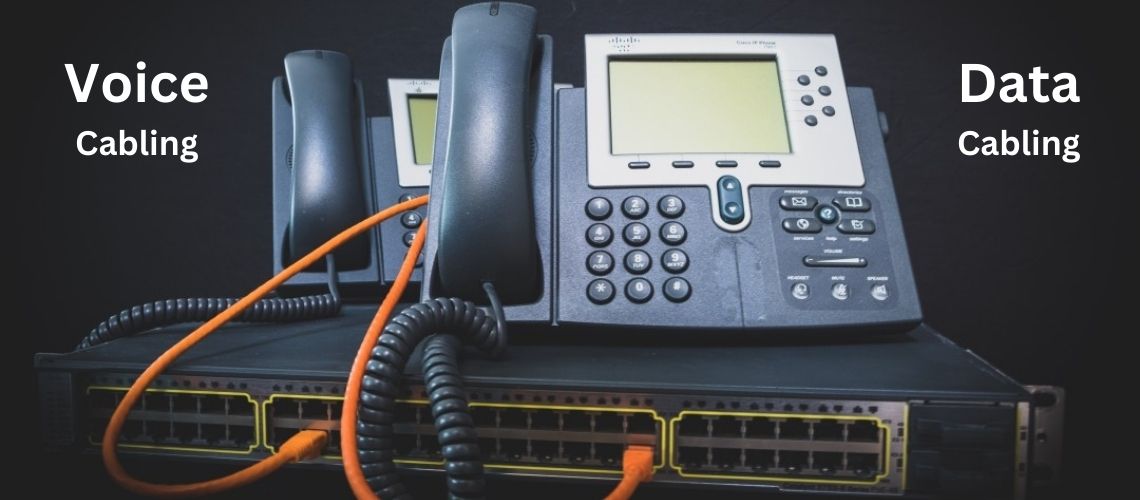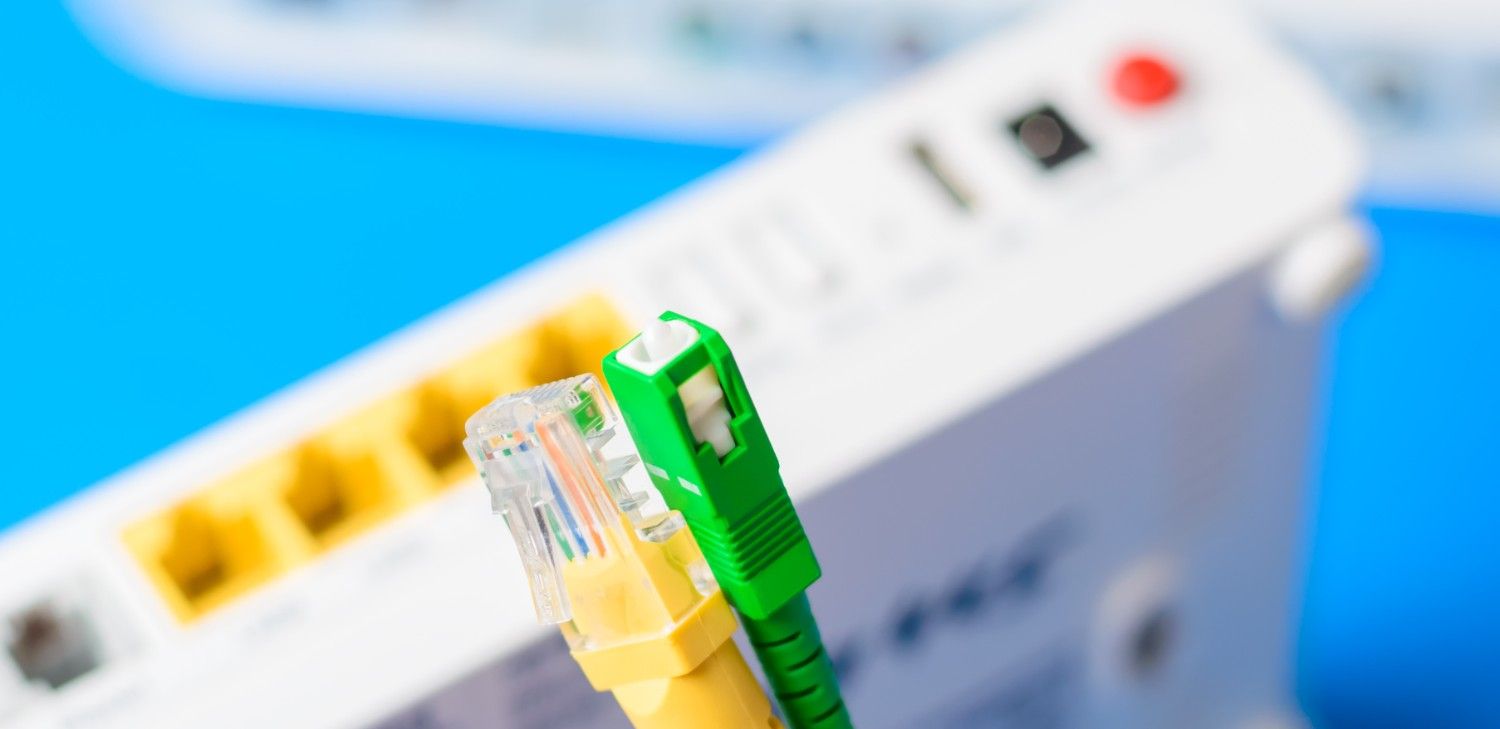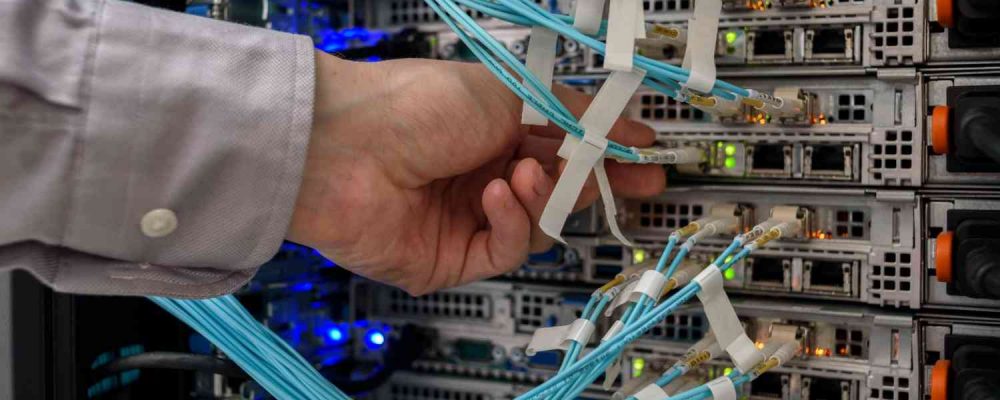Summary: Voice and data cabling connect communication devices to transmit data and voice. Network Drops commonly consist of Ethernet, coaxial, and fiber optic cables. Proper installation results in higher productivity, cost efficiency, and reliability, and integration of voice and data systems eases management. Cabling services from professionals ensure the best performance and scalability of your network, thereby making a future-proof solution.
In today’s world of business, companies no longer view networks as support systems; instead, they see the network as the backbone. Every call placed, every video conference held, every cloud app loaded, and every byte of sensitive data moved grabs one of the layers: cabling infrastructure. While wireless connectivity grabs all the headlines, voice and data cabling is basically the silent force enabling stable, high-performance communication systems.
Consider this guide your textbook that tells you everything about data and telephone cabling:
After this, you will understand why investing in structured cabling is not merely a technical decision but a strategic one.

The term “voice” and data cabling are often also referred to as structured cabling, which comprises the physical wiring system connecting telephones, computers, servers, printers, and all kinds of network-enabled devices in a building or a campus.
In simpler terms:
These cables together create a structure of the network on which seamless communication and data flows between offices are supported.
As companies assess IT infrastructure, their main concerns tend to be software, IT servers, or cloud solutions. None of these, however, will work properly if not well cabled. Shoddy cabling causes:
Conversely, where cabling is solid:
In 3 words: Your cabling either works for or against you and your technology.
Choosing the right cabling standard is crucial. Here’s a quick comparison table:
Cable Type | Speed/Bandwidth | Typical Use Case | Pros | Cons |
Cat5e | Up to 1 Gbps | Small businesses, legacy systems | Affordable, widely available | Limited future scalability |
Cat6 | Up to 10 Gbps (short distances) | Medium offices, VoIP systems | Faster speeds, reduced crosstalk | Shorter max distance for 10 Gbps |
Cat6a | 10 Gbps up to 100m | Enterprises, data-heavy apps | Futureproof, consistent speeds | Higher cost, thicker cables |
Fiber Optic | 1–100+ Gbps | Data centers, high-demand industries | Unmatched speed, long-distance | Expensive, complex installation |
Pro Insight: Many mid-to-large businesses operating ultimately in New Jersey and Pennsylvania are going for Cat6a and Fiber Optics, so their infrastructure is never a bottleneck as cloud workload and video collaboration grow bigger and bigger.
Voice and data cabling is more than wires running through ceilings and walls. A complete structuring system consists of:
Each of these items must be carefully designed and ensured. A lesser link, such as poorly terminated connectors, can sabotage an otherwise rock-solid network.

Prosperous cabling installation requires technical accuracy and strategic foresight. Keep these concerns in mind:
Assess the amount of data your team transmits daily. It may be the case in a law firm that their work and transactions mostly require e-mails, so their bandwidth can be lower. On the contrary, a creative agency may constantly transfer large design files needing higher bandwidth.
Do not design for today. Account for potential headcount expansion, new office procedures, and new technologies like Wi-Fi 7, IoT devices, or augmented reality systems.
Cables installed in manufacturing plants or warehouses require ruggedization and shielding. In offices, the concern will mostly be the plenum-rated safety of air circulation.
Safety and interoperability can be ensured if one complies with TIA/EIA, IEEE, and local building codes. Otherwise, non-compliance could cause inspection rejection and result in a docked one for more repair costs.
Maintenance testing ensures cable integrity, verifies signals, and confirms compliance with performance standards.
The eternal debate in structured cabling basically consists of whether to continue on copper (Cat6/Cat6a) or switch to fiber optics.
Factor | Copper (Cat6/Cat6a) | Fiber Optics |
Cost | Lower upfront | Higher upfront |
Speed | Up to 10 Gbps | 40–400 Gbps |
Distance | 100m max | Several kilometers |
Durability | Susceptible to EMI | Immune to EMI |
Use Case | Small–medium offices | Enterprises, data-heavy industries |
The practical approach? Many businesses deploy hybrid systems: fiber for backbone connections and Cat6a for workstations. This balances cost and performance.
Cost depends on variables like building size, cable type, and labor. While exact numbers vary, here’s a ballpark comparison:
Installation Scope | Estimated Cost Range (per drop/connection) |
Cat5e | $90–$120 |
Cat6 | $120–$180 |
Cat6a | $180–$250 |
Fiber | $250+ |
Hidden Costs to Watch For:
An experienced cabling partner minimizes these risks by planning strategically.
A question that might arise is: why would one invest in professional installation rather than a piecemeal approach to DIY? Because the return is long-term and tangible.
In fact, studies show firms tend to recover the expense for structured cabling within 2 to 3 years, taking into account efficiency gains and reduced IT overhead.
Signs Your Current Cabling System May Be Holding You Back
If you have ticked two boxes or more, it may be time to engage a cabling partner.
Voice and data communications is not just pulling wires. It’s about building the foundation for business continuity and growth. Specialists like Network Drops bring:
When IT leaders partner with a seasoned provider, they get more than just cables. They gain a trusted advisor, ensuring their business runs without interruption.

Voice and data cable still has to be mission-critical, right? All the way from internet speed to call clarity, the cabling of a business dictates operational quality. Employee performance and client satisfaction hang in the balance of the quality of cabling.
From cloud computing to hybrid work and bandwidth-intensive collaboration tools, any further investment in a cabling lie is no longer optional but fundamental. This is because more and more organizations are leaning towards big bandwidth applications that need equally big bandwidth cabling.
In case of an upgrade or a new installation, do not risk any half-baked solutions. Use the learnings of people versed in the tricky balancing of technical excellence, compliance, and future scalability. That is how the cabling stops being a hidden utility and becomes a competitive advantage. Contact Network Drops now!
Usually, about every 7–10 years. Earlier, if your technology needs to change drastically or if you have ongoing connectivity problems,
Yes. Current systems can run over the same structured cable network, provided it’s properly installed and tested.
If you’re working with big files, real-time information, or extended distances, yes. It’s quicker, more secure, and scalable.
Size and complexity dependent. A small office could be a day or two. More extensive facilities would take a few days to a fortnight or so.
That’s the very reason you have professionals like Network Drops. They will evaluate your environment and provide recommendations tailored to your needs.
"*" indicates required fields
Scott Fcasni is the driving force behind Shock I.T. Support’s commercial datacomm cabling division, delivering expert solutions that power reliable, high-performance network infrastructures. With extensive experience in structured cabling and a commitment to precision, Scott ensures that every project—whether for small businesses or large enterprises—meets the highest standards of quality and scalability.